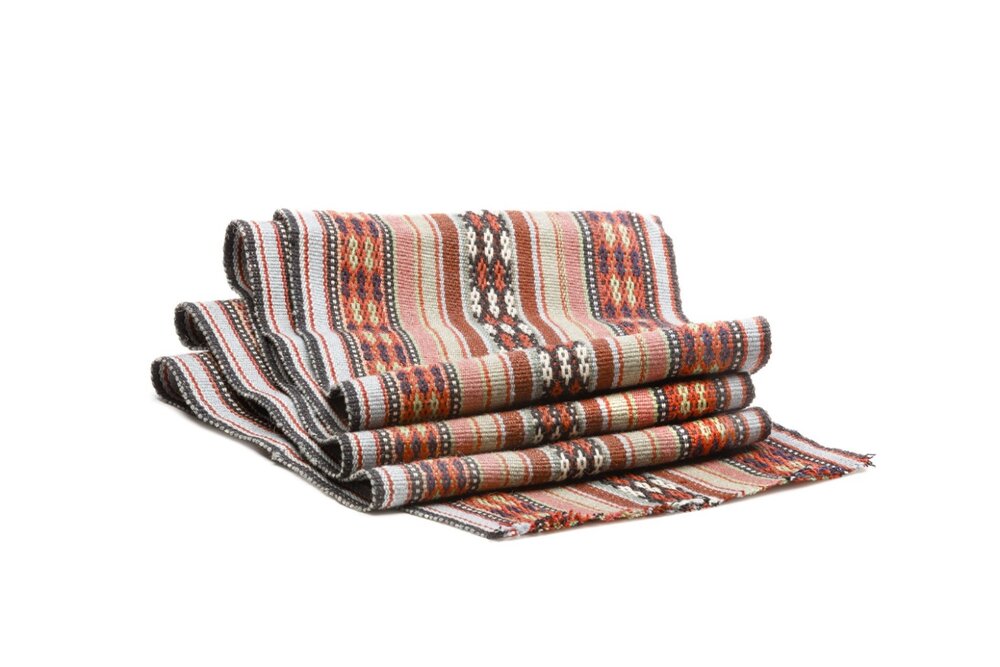Popular souvenirs to buy while visiting Iran

One of the traditions of Ancient Persia is handicrafts, which are preserved in the culture of the nation and passed on from generation to generation.
Today handmade products are highly regarded outside Iran as a unique art. Popular way of Iranian handicraft are true masterpieces, and each of them has its own history.
Art is a fine industry in Iran and is famous for its unique handicrafts. There are presently nine million Iranians, involved in the production of handicrafts and other rural industries like Persian carpets, Kilim & Jajim, hand–made and hand-painted glassware and ceramics, pottery items and jewellery making. The Ministry of Cultural Heritage, Tourism, and Handicrafts has listed popular souvenirs to buy while visiting Iran as below.
Glazed Pottery
Glazed Pottery refers to a field of handicrafts that is shaped by clay or other mixed muds using hand, pottery wheel or slushing and baked in 800°C after they are dried. The resulted pottery is then glazed and re-baked in 900°C to 1100°C to create a glassy and permanent glaze on it.
Mamqan Embroidery
Mamqan Embroidery (Mamaqan Doozi) is a branch of embroidery conducted in East Azarbaijan Province of Iran using colorful khameh (a type of silky thread) and needlework on a piece of cloth.
The patterns are mostly abstract and inspired by the artists’ personal perceptions and insights regarding nature, many of which include figurative flowers and plants. An ordinary 4-cm needle and a thimble are the only tools used by embroider to create the most novel designs on cloth and produce elegant and useful works of art.
Batik Dyeing
Batik is a technique of wax-resist dyeing applied to whole cloth. Batik is made either by drawing dots and lines of the resist with a spouted tool called a tjanting, or by printing the resist with a copper stamp called a cap.
Toreutics
Toreutics (engraving on metal) refers to artistic metalworking - hammering gold or silver (or other materials), engraving, or using repoussé and chasing to form minute detailed reliefs or small engraved patterns.
Elaborated Woodwork
Elaborated Woodwork refers to the production of elegant and delicate wooden products using thin wooden coating that is usually taken from nutty and unusable parts of the lumber.
Direct Heat Glassblowing
Direct Heat Glassblowing is a branch of glassblowing that is made by attaching several pre-made glass tubes or bars, shaped by a direct heat gas poker. The final product can be statue, kitchen utensil, kettle, etc.
Instrument Making
Instrument Making is the art of making and decorating Iranian traditional music instruments (Ood, Dotar, Setar, Dohol, Kamanche, etc.) using walnut wood, areca palm wood, and other material. Instruments such as string instruments, wind instruments, and percussion instruments are made by this technique.
Jajim
Jajim is a handwoven rug that is thick and has no lint, made of wool and cotton with long wrapping and stripped and colorful pattern. Jajim is woven by weaving machine, brush and reel and is used for ground cloth, mat, etc.
Kilim
Kilim Weaving is the art of wrapping and weaving different types of Kilim using natural, colorful fibers as well as repairing the weaved Kilims. Kilim is a flat tapestry-woven carpet or rug can be purely decorative or can function as prayer rugs. Modern kilims are popular floor coverings in Western households.
Filigree
Filigree is a form of intricate metalwork, popular in Zanjan and Isfahan. It may span from delicate jewelry to cast iron railings and balustrades. In jewelry, it is usually an ornamental work of fine wire of gold, silver, or copper applied chiefly to gold and silver surfaces, made with tiny beads or twisted threads, or both in combination, soldered together or to the surface of an object of the same metal and arranged in artistic motifs. Common motifs include Paisley, Rizeh Jeqe, Barg-e Farang, leaf, bosom, ivy, double ivy, triple spring, etc.
Leave a Comment